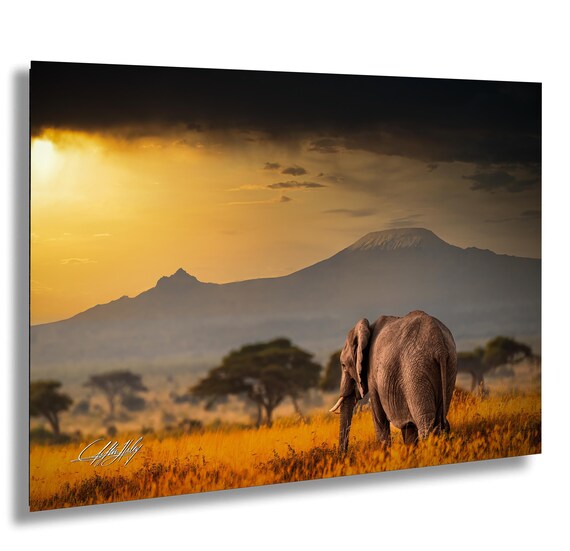Capture the Heights: Iconic Mountain Adventures for Photographers & Nature Lovers

Are you a photographer or nature enthusiast yearning for an adventure that combines breathtaking landscapes with thrilling experiences? Look no further than the world's most iconic mountain ranges. From scaling the jagged peaks of the Italian Dolomites to trekking the ancient Inca Trail and conquering the majestic Mount Kilimanjaro, these destinations offer unparalleled opportunities to capture stunning images and immerse yourself in the beauty of the natural world. This guide provides essential tips and information to help you plan your photography-focused mountain adventure.
Via Ferrata in the Italian Dolomites: Conquer Vertigo, Capture Beauty
The Italian Dolomites, a UNESCO World Heritage Site, are renowned for their dramatic, jagged limestone formations piercing the azure sky. For the adventurous photographer, there's no better way to experience these mountains than by tackling a Via Ferrata, or "iron path." These protected climbing routes utilize steel cables, ladders, and suspension bridges, allowing you to ascend challenging terrain with a degree of safety.
One popular route is the Via Ferrata Ivano Dibona. This route, graded as moderate in difficulty, features stunning views of iconic peaks such as the Cristallo group and the Sorapiss glacier. Prepare for vertigo-inducing heights and exhilarating challenges!
Photography Tips for the Dolomites
- Wide-angle lenses are your friend. Capture the grandeur of the Dolomite peaks with a wide-angle lens, allowing you to fit more of the scene into your frame.
- Shoot during the golden hours. Early morning and late afternoon light create dramatic shadows and enhance the golden hues of the rock. Alpenglow, the reddish glow on the mountaintops during sunrise and sunset, is a particularly magical sight.
- Use a polarizing filter. Polarizing filters reduce glare, enhance color saturation, and deepen the blue of the sky, making your images pop.
- Consider a Dolomites Adventure Photography Workshop. Book a guided photography experience with expert instructors.
Safety and Equipment
- Essential Equipment: Helmet, harness, Via Ferrata set (lanyard with energy absorber and carabiners), sturdy hiking boots, gloves.
- Safety Precautions: Never attempt a Via Ferrata alone. Always check weather conditions before setting out. Be aware of your physical limitations.
- Gear Rental: Rent necessary equipment from reputable outdoor gear shops. (Affiliate link to rental gear provider)
The Inca Trail to Machu Picchu, Peru: A Journey Through Time and Ecosystems
Trekking the Inca Trail to Machu Picchu is more than just a hike; it's a journey through diverse ecosystems, from lush cloud forests to windswept alpine tundra, culminating in the awe-inspiring ancient city of Machu Picchu. The diverse environments present unique photographic opportunities. This is an ideal adventure for Inca Trail wildlife photography.

Photography Opportunities Along the Inca Trail
- Best Time of Year: May to September, during the dry season.
- Best Time of Day: Capture the early morning mist swirling around the mountains or the late afternoon light illuminating the ruins.
- Flora and Fauna: The Inca Trail is home to a variety of orchids, hummingbirds, and other unique species.
- What Wildlife Will I See on the Inca Trail?: Possible species include hummingbirds, spectacled bears (rare), Andean fox, and various bird species.
Permits and Booking
- Permit Acquisition: Permits are required to hike the Inca Trail and must be booked well in advance.
- Official Booking Sites: Secure your permits through the official government website or licensed tour operators.
- Preparing for Machu Picchu Photography Expedition: Adequate preparation is vital for high altitude treks.
Ethical Considerations and Practical Advice
- Altitude Sickness Prevention: Acclimatize to the altitude before starting the trek. Drink plenty of water and avoid alcohol. Consider consulting your doctor about altitude sickness medication.
- Sustainable Tourism Inca Trail photography tours: Look for tours that are eco-friendly and sustainable to minimize environmental impacts.
- Ethical Interactions: Respect the environment and local guides. Avoid littering or disturbing wildlife.
- Night Photography: Capture long exposures and time-lapses of the night sky.
Lenses and Gear
- Use a macro lens to capture the delicate beauty of orchids.
- Use high shutter speeds to freeze the rapid movements of hummingbirds.
- Telephoto Lens - Ideal for distant wildlife shots
- Best camera settings for Inca Trail wildlife: High ISO, fast shutter speed.
Mount Kilimanjaro, Tanzania: A Wildlife Photographer's Ascent to the Roof of Africa
Climbing Mount Kilimanjaro, the highest peak in Africa, is an unforgettable experience, especially for wildlife photographers. While the summit is the ultimate goal, the journey offers unique opportunities to photograph diverse wildlife in their natural habitat.

Routes and Wildlife Encounters
- Marangu and Lemosho Routes: These routes have a higher probability of encountering wildlife, including colobus monkeys and various bird species.
- Kilimanjaro Gear List for Photographers: Pack light and be prepared for all types of weather.
Ethical Wildlife Photography
- Maintain a respectful distance. Avoid approaching or disturbing animals.
- Avoid flash photography. Flash can scare or disorient wildlife.
- Ethical Considerations: Respect wildlife and cultural heritage.
Equipment for Altitude and Harsh Conditions
- Telephoto lenses are crucial for capturing wildlife from a safe distance.
- Image stabilization is essential for sharp images in low light or when using long lenses.
- Lightweight tripods provide stability without adding unnecessary weight.
- Weather-sealed equipment and lens hoods protect your gear from the elements.
- Best Kilimanjaro route for wildlife photography opportunities: Lemosho and Northern Circuit
Preparation and Permits
- Permits: Climbing permits are required and must be obtained through a licensed tour operator.
- How long does it take to climb Mount Kilimanjaro?: The Lemosho route typically takes 8 days, while the Marangu route can be done in 5-6 days.
- Altitude Sickness Prevention & Treatment: Gradual acclimatization, proper hydration and medication (if needed).
Ready to Capture Your Own Mountain Masterpiece? Book your flights to Italy, Peru, or Tanzania today through our partner airline links and start planning your adventure. Explore adventure tour options and secure necessary permits through vistalocation.com's affiliate travel partners.